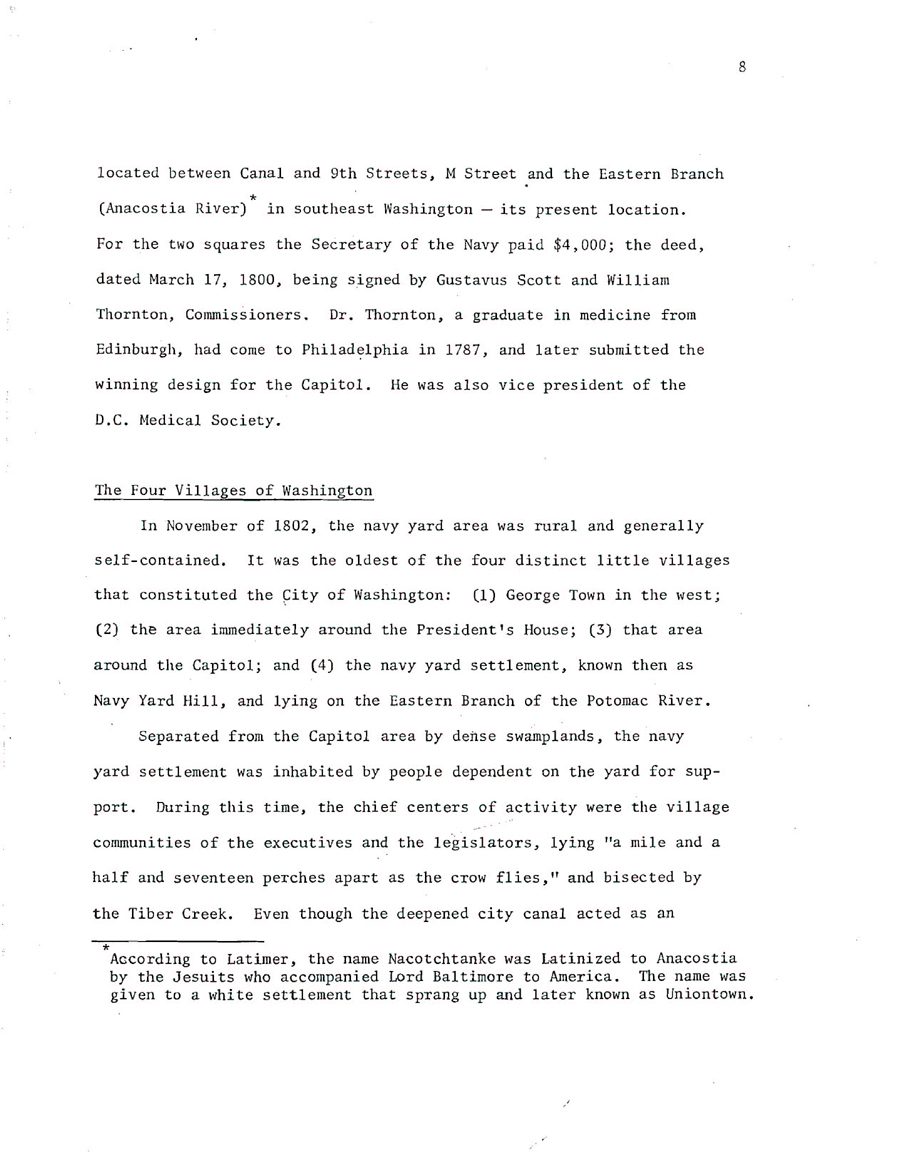

(Continued from page 7) located between Canal and 9th Streets, M Street and the Eastern Branch (Anacostia River – see NOTE below) in southeast Washington – its present location. For the two squares the Secretary of the Navy paid $4,000; the deed, dated March 17, 1800, being signed by Gustavus Scott and William Thornton, Commissioners. Dr. Thronton, a graduate in medicine from Edinburgh, had come to Philadelphia in 1787, and later submitted the winning design for the Capitol. He was also vice president of the D.C. Medical Society.
In November 9f 1802, the navy yard area was rural and generally self-contained. It was the oldest of the four distinct little villages that constituted the City of Washington: (1) George Town in the west; (2) the area immediately around the President’s House; (3) that area around the Capitol; and (4) the navy yard settlement, known then as Navy Yard Hill, and lying on the Eastern Branch of the Potomac River.
Separated from the Capitol area by dense swamplands, the navy yard settlement was inhabited by people dependent on the yard for support. During this time, the chief centers of activity were the village communities of the executives and the legislators, lying “a mile and a half and seventeen perches apart as the crow flies,” and bisected by the Tiber Creek. Even though the deepened city canal acted as an (continued on page 9)
[NOTE – According to Latimer, the name Nacotchtanke was Latinized to Anacostia by the Jesuits who accompanied Lord Baltimore to America. The name was given to a white settlement that sprang up and later known as Uniontown.]
This site is sponsored by the Friends of the Old Naval Hospital
Last updated November 22, 2008